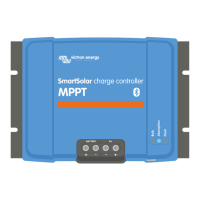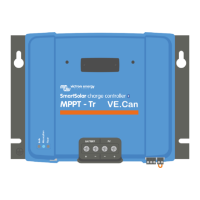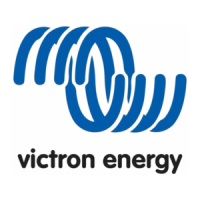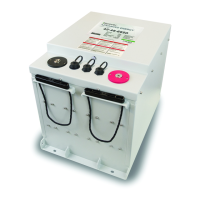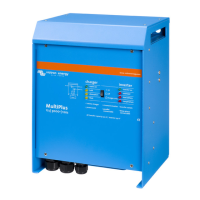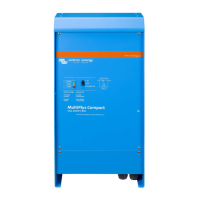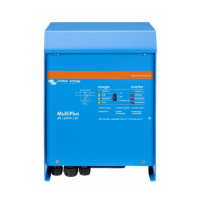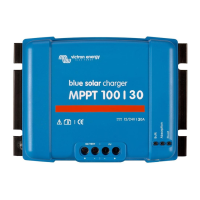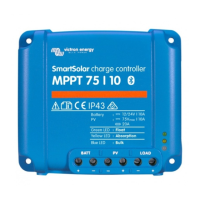• A GX device
• The VRM Portal (GX device or GlobalLink 520 needed)
• The SmartSolar Control display - an external display that plugs into the front of the solar charger
• The MPPT Control - an external display that connects to the VE.Direct port (the VE.Direct cable is not included with the MPPT
Control)
3.7. VE.Direct port
The VE.Direct port is used to communicate with the solar charger. It can be used for several purposes:
• To connect to a monitoring device, such as a GX device or the GlobalLink.
• To connect with the VictronConnect App.
• For external control.
Special cables or interfaces are needed to connect to this port:
• VE.Direct cable - used to connect to a GX device or the GlobalLink.
• VE.Direct to USB interface - used to connect via USB to the VictronConnect App.
• VE.Direct Bluetooth Smart dongle - used to connect via Bluetooth to the VictronConnect App.
•
VE.Direct TX digital output cable - used for streetlight control or to create a virtual load output.
• VE.Direct non inverting remote on/off cable - used to remotely switch the solar charger on or off.
3.8. VE.Can ports
The VE.Can ports are used to communicate with the solar charger. It can be used to connect to a monitoring device, such as a
GX device.
It is possible to connect several "daisy chained" VE.Can solar chargers (or other VE.Can devices) to a single GX monitoring
device. All interconnected solar chargers will synchronise their charge algorithms.
When connecting to this port, a RJ45 UTP Cable is used (not included). The first and last device in the chain needs to have a
VE.Can RJ45 terminator installed (2 pieces are included). A connection example is shown in below figure.
RJ45 cable
RJ45 cable
VE.Can RJ45 terminator
VE.Can RJ45 terminator
Example of two VE.Can solar chargers connecting to a single GX device
3.9. Battery charging
3.9.1. Adaptive 3-stage battery charging
The solar charger is a 3-stage charger. The charge stages are: Bulk – Absorption – Float.
Bulk
During the bulk stage the solar charger delivers the maximum charge current, to rapidly charge the batteries. During this stage
the battery voltage will slowly increase. Once the battery voltage has reached the set absorption voltage, the bulk stage stops and
the absorption stage will commence.
Absorption
MPPT solar charger manual
Page 6 Features
